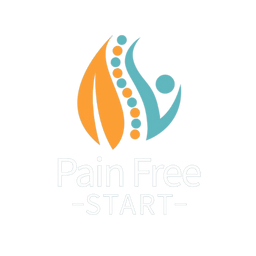Arthritis in the hands can make daily tasks—such as opening jars, writing, or even gripping a cup—challenging and painful. Fortunately, there are a number of strategies and tools you can use to manage pain, reduce stiffness, and maintain mobility in your hands. In this blog, I’ll share practical advice to help make life easier for those living with arthritic hands, from exercise recommendations to adaptive tools and self-care tips.
1. Focus on Gentle Hand Exercises
Strengthening and Stretching for Mobility
One of the best ways to improve hand function and reduce arthritis symptoms is through gentle exercises. Stretching and strengthening your hands and fingers can help reduce stiffness, increase range of motion, and improve dexterity. Maintaining shoulder strength will also help hand function. Some simple exercises to try include:
- Finger stretches: Hold your hand out with fingers spread wide, then slowly bring them back together, holding for a few seconds.
- Grip strengthening: Use a stress ball or hand exerciser to work on your grip strength. This can help counteract the weakness that comes with arthritis. but if you do too much it can aggravate – so just take it steady.
- Maintaining shoulder strength: Stand facing a wall then slide both hands up the wall and then slowly back down.
Tip: Always consult your physiotherapist before starting an exercise program to ensure you’re doing movements that are right for your condition.
2. Adaptive Tools to Make Daily Tasks Easier
Kitchen Gadgets, Writing Aids, and More
Many products are designed specifically to make everyday tasks easier for people with arthritis. From ergonomic cutlery to easy-grip jar openers, these tools can reduce strain and pain during common activities.
Some useful products include:
- Ergonomic kitchen tools like easy-to-grip can openers, peelers, and knives
- Pen grips or writing aids that make writing easier
- Electric jar openers that can help with twisting without causing pain
These blogs may be helpful –
The Best Cutlery for Arthritic Hands: Enhancing Dining Comfort
The Best Can Openers for Arthritic Hands: Making Kitchen Tasks Easier
The Best Jar Openers for Arthritic Hands: Easy Solutions for Struggling Hands
The Best Kettles for Arthritic Hands: Easy, Effortless, and Safe Options
Easy-to-Use Knitting and Crochet Tools for Arthritic Hands
The Best Gardening Tools for Arthritic Hands: Comfort, Ease, and Control Outdoors
3. Manage Pain with Heat and Cold Therapy
Relief When You Need It Most
Applying heat or cold to your hands can help relieve the pain and stiffness associated with arthritis. Here’s how you can use both:
- Heat therapy: Use a warm compress, heated hand pad, or even warm water to ease muscle tension and promote circulation.
- Cold therapy: Cold packs or ice wrapped in a cloth can help numb the pain and reduce swelling during flare-ups.
Tip: Alternate between hot and cold treatments to see which one provides more relief for you.
This blog will be helpful for more guidance – Heat or Ice for Pain Relief? When to Use Cold and Heat Therapy for Injuries and Stiffness
4. Maintain Good Posture and Hand Positioning
Avoiding Strain on Your Hands
Sometimes, the way we use our hands and wrists can exacerbate arthritis pain. Be mindful of your hand positioning during tasks. Try to avoid bending your wrists or holding them in awkward positions for long periods. When lifting objects, use both hands whenever possible, and make sure your posture is aligned to prevent unnecessary strain on your joints.
5. Consider Supportive Hand Braces
Help with Joint Stability
For individuals with more severe arthritis, hand braces can provide extra support and stability. Wearing a brace can help reduce pain and prevent further joint damage by keeping your fingers or wrists in a more neutral position. Some braces also provide compression, which can reduce swelling and improve blood flow. Ideally it’s not something that you would wear all the time – as this may further weaken your hands. But they could be a useful adjust to use if things are particularly bad or to help with certain aggravating tasks.
6. Pay Attention to Your Diet
Anti-Inflammatory Foods for Joint Health
What you eat can play a significant role in managing arthritis. Focus on incorporating anti-inflammatory foods that may help reduce joint pain and swelling. Key foods include:
- Fatty fish (such as salmon and mackerel) rich in omega-3 fatty acids
- Nuts and seeds that provide essential fatty acids
- Fruits and vegetables, especially those with high antioxidant content like berries, spinach, and broccoli
Additionally, some people find relief with specific supplements – This blog maybe helpful for you;
Do Supplements Really Help Arthritis? What Works & What’s a Waste of Money
7. Rest and Recovery Are Key
Take Breaks to Avoid Overuse
If you have arthritis in your hands, it’s essential to rest them regularly. Overuse can lead to flare-ups and further joint damage. When performing tasks, take frequent breaks and switch hands whenever possible. If you’re involved in a repetitive task, such as typing or knitting, be sure to stretch and rest your hands regularly to prevent stress on your joints.
8. Don’t Assume It’s Just Osteoarthritis
Inflammatory Arthritis Like Rheumatoid Arthritis Can Affect the Hands Too
While osteoarthritis (OA) is the most common type of arthritis in the hands, it’s important not to assume that it’s the only cause of your symptoms. Inflammatory arthritis, such as rheumatoid arthritis (RA), is another condition that can cause similar symptoms, but it often affects both hands (bilateral hand pain) and may cause additional systemic symptoms such as fatigue.
If you experience hand pain and stiffness that affects both hands or notice swelling, it’s worth discussing with your GP. A simple blood test can help rule out inflammatory arthritis like rheumatoid arthritis. Early diagnosis and treatment of RA are crucial in preventing further joint damage and improving your quality of life.
This blog maybe helpful – Osteoarthritis vs. Rheumatoid Arthritis: Key Differences & Treatments
9. Medication Options for Managing Arthritic Hands
🖐 Relief with Medications
If conservative treatments like exercise and lifestyle changes aren’t providing enough relief, medication may be necessary to help manage pain and inflammation in arthritic hands. Here are some common medications prescribed for arthritis:
- Nonsteroidal anti-inflammatory drugs (NSAIDs): Medications like ibuprofen or naproxen can help reduce inflammation and ease pain.
- Topical creams or gels: These may contain ingredients like menthol or capsaicin that provide temporary pain relief when applied directly to the skin.
- Disease-modifying anti-rheumatic drugs (DMARDs): For individuals with inflammatory arthritis like rheumatoid arthritis, DMARDs can help slow the progression of the disease and manage symptoms.
- Corticosteroids: These are stronger anti-inflammatory medications, usually prescribed for flare-ups, that can help reduce inflammation quickly.
Always consult your doctor before starting any new medication to ensure it’s the right choice for your condition and won’t interact with any other treatments you’re taking.
Conclusion
Managing arthritic hands requires a multi-faceted approach. By incorporating gentle exercises, using adaptive tools, and being mindful of pain management techniques, you can improve the function of your hands and reduce discomfort. Whether it’s through specialised gadgets, supportive hand braces, or dietary changes, you can regain more control over your daily activities. If you’re struggling, don’t hesitate to seek professional advice to tailor the right solutions for your needs.
Take care, Helen
Helen Manders BSc (Hons) MCSP HCPC
Chartered Physiotherapist Since 2001
P.S. Don’t forget I’m here to support you if you need. Click here to find out how.



